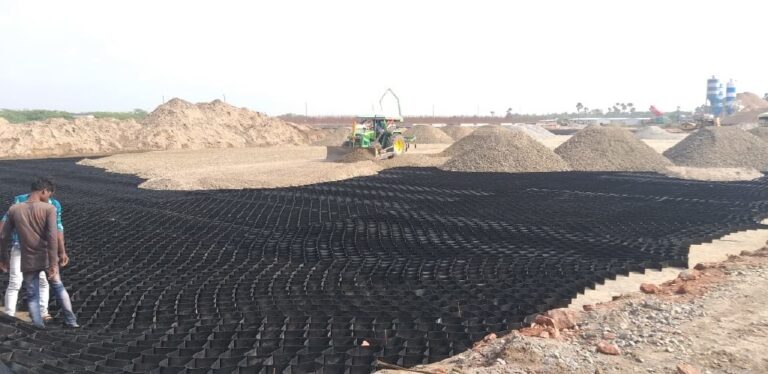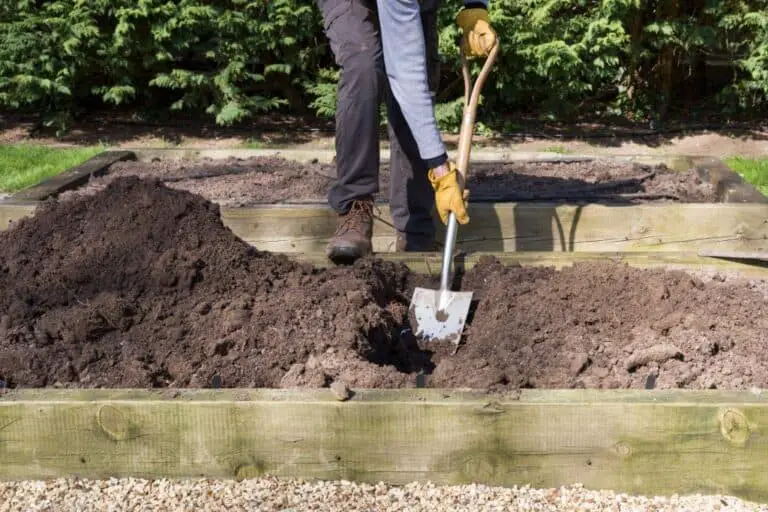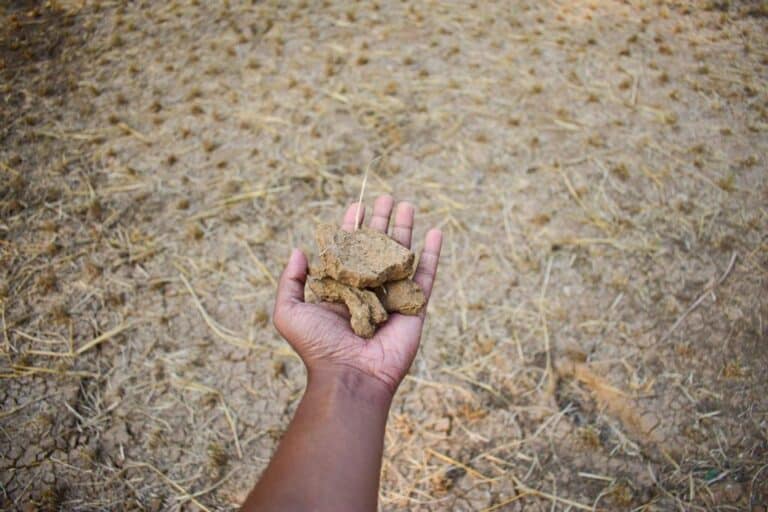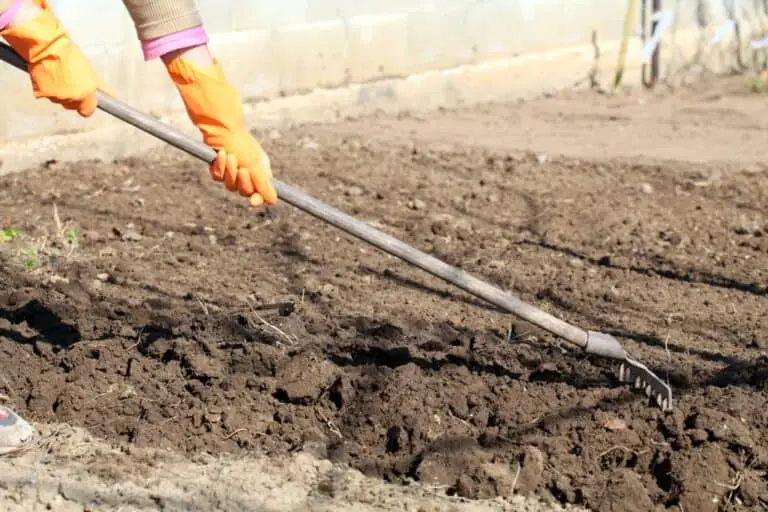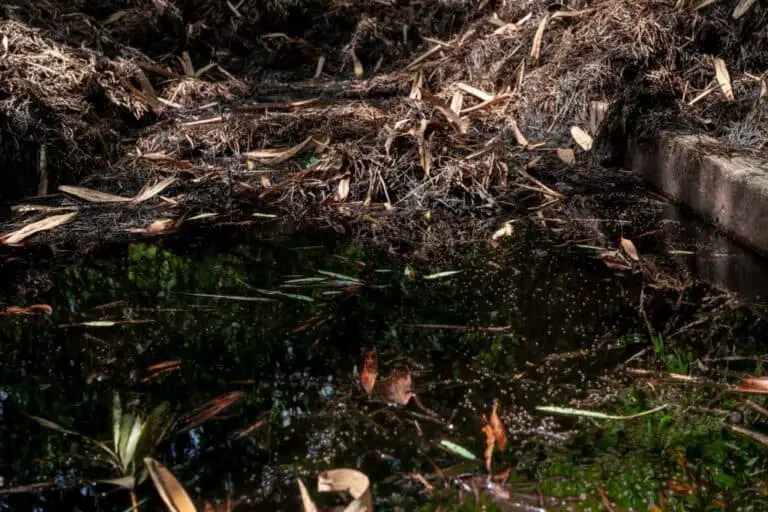Why Is Topsoil the Most Fertile Layer of Soil? Nutrient-Rich Soil

In the world beneath our feet lies a hidden treasure, an unsung hero of the natural world: topsoil. Don’t let its unassuming exterior fool you; it may appear to be nothing more than a layer of dirt. Topsoil is the heart and soul of our Earth’s fertility, the cornerstone upon which lush gardens and bountiful crops thrive.
So, why is topsoil the most fertile layer of soil? It is the most fertile level of soil due to its composition. It has the highest concentration of organic matter and microorganisms and is where most of the Earth’s biological soil activity occurs.
In this journey through the rich tapestry of soil science, we’re about to unearth the secrets of why topsoil reigns supreme as the most fertile layer in the soil profile. Join us as we delve into the rich, nutrient-rich world of topsoil and uncover the mysteries that make it the lifeblood of our green planet. It’s time to understand why, in the intricate dance of soil layers, topsoil takes center stage.
The Layers of Soil
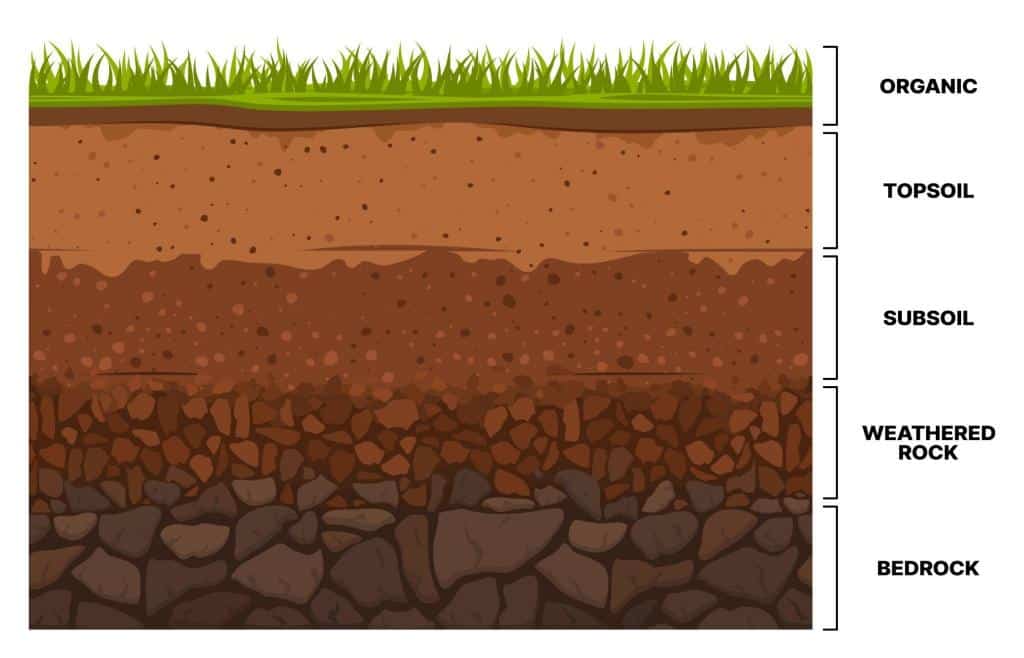
Soil is made up of distinct layers, called horizons, which are formed due to the original composition of the land, the weather, the vegetation of the area, and other factors. The number and composition of horizons in different soils have tremendous diversity, and the most well-developed soils might have all of these layers, while the least-developed soils might only have an A and a D horizon. The basic horizons include:
- O Horizon: This is the top layer, composed of organic matter like leaves, twigs, and decaying plant material. It provides nutrients to the soil as it breaks down.
- A Horizon (Topsoil): The topsoil is where most plant roots grow and where many critical soil processes take place. It is a rich mixture of mineral particles, organic matter, water, and air.
- E Horizon: Known as the “eluviated” horizon, this layer is often leached of minerals and nutrients due to water percolation.
- B Horizon (Subsoil): Subsoil contains minerals and nutrients that leach down from the topsoil. It is less fertile but still contributes to plant growth.
- C Horizon: Also called the parent material, this layer consists of weathered bedrock and minerals. It’s the source of most of the soil’s mineral content.
- R Horizon: The bedrock itself forms the lowest layer, which is mostly inaccessible to plant roots.
The Significance of Topsoil
The significance of topsoil cannot be overstated. It serves as the lifeblood of agriculture and gardening, providing the essential nutrients and support required for plants to thrive. Without fertile topsoil, our ability to grow crops and nurture gardens would be severely compromised.
Now that we understand the layers of soil, let’s focus on the A horizon, also known as topsoil, and explore why it holds a special place in the world of agriculture and gardening.
1. Rich in Nutrients
Topsoil is teeming with essential nutrients that plants need to grow and thrive. It contains a mix of organic matter, minerals, and microorganisms that provide a steady supply of nitrogen, phosphorus, potassium, and other vital elements. These nutrients are crucial for plant photosynthesis, root development, and overall health.
2. Ideal for Root Growth
Plant roots predominantly reside in the topsoil layer because it offers the perfect conditions for root growth development. The loose texture of topsoil allows roots to penetrate easily, and the abundance of nutrients ensures they have the sustenance required for growth. Additionally, topsoil retains just the right amount of moisture, preventing waterlogged or parched conditions that can harm plants.
3. Vital Microbial Activity
Topsoil is a bustling hub of microbial activity. Bacteria, fungi, and other microorganisms thrive in this layer, breaking down organic matter and transforming it into nutrients that plants can absorb. These microorganisms also help maintain soil structure, preventing erosion and compaction.
4. Resilience Against Erosion
The topsoil layer serves as a protective shield for the soil beneath it. It is more resistant to wind and water-caused erosion because of its high organic matter content. This layer acts as a buffer, preserving the fertility of the soil profile and preventing valuable nutrients from being washed away.
5. Home to Earthworms and Soil Organisms
Earthworms, in particular, play a significant role in topsoil health. Their burrowing activities enhance soil aeration and drainage, creating a conducive environment for plant roots and soil organisms. As they digest organic matter, they further enrich the topsoil with their nutrient-rich castings.
6. The Key to Agricultural Success
For centuries, farmers have recognized the importance of topsoil in achieving bountiful harvests. The fertility of topsoil directly impacts crop yield and quality. To maintain and enhance topsoil fertility, sustainable farming practices, such as crop rotation and organic matter incorporation, are crucial.
Why Is Topsoil the Most Fertile Layer of Soil?
Topsoil earns its reputation as the most fertile layer of soil through a remarkable combination of factors. Firstly, topsoil is rich in organic matter. This organic material consists of decomposed leaves, plants, and microorganisms, creating a nutrient-packed environment.
This organic matter not only provides essential nutrients like nitrogen, phosphorus, and potassium but also improves the soil’s water-holding capacity, fostering a welcoming environment for roots.
Moreover, topsoil hosts a bustling community of microorganisms, including bacteria, fungi, and earthworms. These tiny creatures play a pivotal role in nutrient cycling and decomposition, breaking down organic matter into forms that plants can readily absorb.
Additionally, the loose texture of topsoil promotes aeration, allowing plant roots to access oxygen while preventing waterlogging. To put it simply, topsoil’s unique blend of organic matter, microorganisms, and ideal texture creates the perfect conditions for robust plant growth, making it the crown jewel of soil layers when it comes to fertility.
Here’s a breakdown of why topsoil is gardeners’ and farmers’ go-to choice:
| Key Factors | Why Topsoil is Fertile |
| Rich in organic matter | Abundance of decomposed plants, microorganisms, nutrients |
| Ideal texture for root growth | Loose, well-aerated, prevents waterlogging |
| Thriving microorganism community | Nutrient cycling, organic matter breakdown |
| Nutrient-rich composition | Essential elements for plant growth |
In essence, topsoil embodies the essence of fertile ground, providing the nourishment and growing conditions that sustain life above ground.
Nutrient Content in Topsoil
Topsoil is a treasure trove of essential nutrients that are vital for plant growth and development. These nutrients include the famous NPK trio (nitrogen, phosphorus, and potassium) and various micronutrients.
Essential Nutrients
- Nitrogen (N): Nitrogen is a fundamental nutrient for plant growth, influencing leaf and stem development. It is a key component of chlorophyll, the pigment responsible for photosynthesis.
- Phosphorus (P): Phosphorus is essential for root development and energy transfer within plants. It plays a crucial role in flowering and fruiting.
- Potassium (K): Potassium helps regulate water uptake and assists in various physiological processes, such as enzyme activation.
Micronutrients
In addition to the primary nutrients (NPK), topsoil contains a range of micronutrients, including iron, manganese, and zinc. These micronutrients are required in smaller quantities but are no less important for plant health.
Availability of Nutrients
The availability of nutrients in topsoil depends on several factors, including soil pH, organic matter content, and microbial activity. Properly balanced topsoil ensures that plants have access to these nutrients, promoting their growth and vitality.
In the next section, we’ll explore the role of organic matter in topsoil and how it contributes to its fertility.
Topsoil Conservation and Management
Preserving and managing topsoil is critical for sustaining our food production systems and maintaining a healthy environment. Here are some strategies for topsoil conservation:
1. Crop Rotation
Rotating crops can prevent the depletion of specific nutrients in the topsoil, as different plants have varying nutrient requirements. This practice also disrupts the life cycles of pests and diseases, reducing the need for chemical interventions.
2. Cover Cropping
Planting cover crops during fallow periods helps protect the topsoil from erosion and nutrient loss. Cover crops add organic matter to the soil when they decompose, enriching its fertility.
3. Reduced Tillage
Minimizing tillage practices can prevent topsoil disturbance, preserve its structure, and reduce the risk of erosion.
4. Organic Matter Addition
Regularly incorporating organic matter, such as compost or well-rotted manure, into the topsoil can boost its nutrient content and microbial activity.
5. Terracing and Contour Farming
In hilly or sloping landscapes, terracing and contour farming techniques can help control water runoff and prevent topsoil erosion.
Conclusion
In conclusion, topsoil is the most fertile layer of soil due to its composition of organic matter, minerals, and thriving microorganisms. Its formation is a complex interplay of geological and environmental factors, requiring significant time to develop. The nutrient content of topsoil, including essential elements like nitrogen, phosphorus, and potassium, sustains plant life. Organic matter and microbial activity further enhance its fertility.
However, topsoil faces threats, including soil erosion, which can have severe environmental and agricultural consequences. To combat these threats, conservation practices such as no-till farming, crop rotation, and cover cropping are essential.
In both rural and urban settings, the conservation and management of topsoil are crucial for ensuring food security, protecting the environment, and maintaining green spaces. By understanding the significance of topsoil and adopting sustainable practices, we can continue to reap the benefits of this precious resource for generations to come.
FAQs on Topsoil and Soil Layers in Agriculture
What is the difference between topsoil and subsoil?
Topsoil is the uppermost layer of soil, rich in organic matter and nutrients, where most plant roots grow. Subsoil is the layer beneath, with fewer nutrients and less organic material, mainly providing support to plants.
How deep is the typical topsoil layer?
The typical topsoil layer ranges from 2 to 8 inches deep, although it can vary depending on location and soil conditions.
Can I improve the fertility of my garden’s topsoil naturally?
Yes, you can enhance topsoil fertility naturally by adding compost, organic matter, cover crops, and practicing crop rotation. These methods enrich the soil with nutrients and improve its structure.
What are the signs of nutrient deficiency in plants due to poor topsoil?
Yellowing leaves, stunted growth, poor fruit development, and increased susceptibility to pests or diseases are common signs of nutrient deficiency in plants due to poor topsoil.
Are there any methods to test the quality of the topsoil in my garden?
You can test topsoil quality with soil test kits or by sending samples to a soil testing lab. They analyze nutrient levels, pH, and other factors to determine soil health.
What factors contribute to the depletion of topsoil?
Erosion, overuse, improper farming practices, deforestation, and urban development contribute to the depletion of topsoil, leading to reduced fertility.
How can I enhance the fertility of my garden’s topsoil?
To improve garden topsoil, use organic matter, compost, mulch, and avoid over-tilling. Implement sustainable farming practices like cover cropping and reduced tillage.

